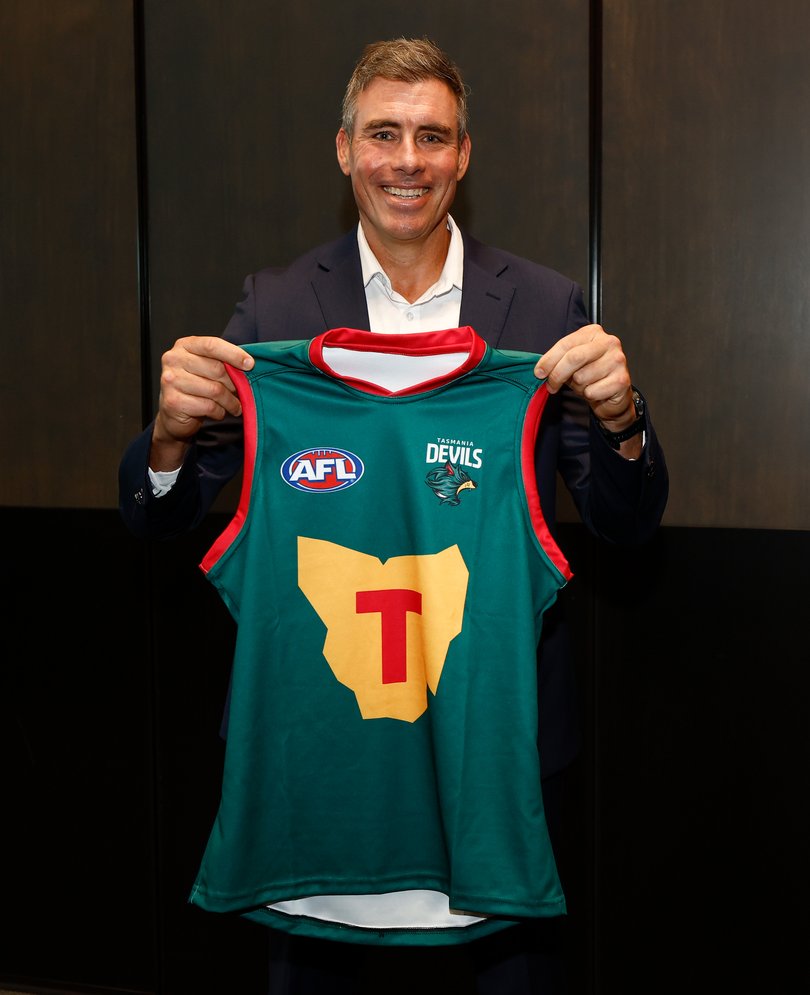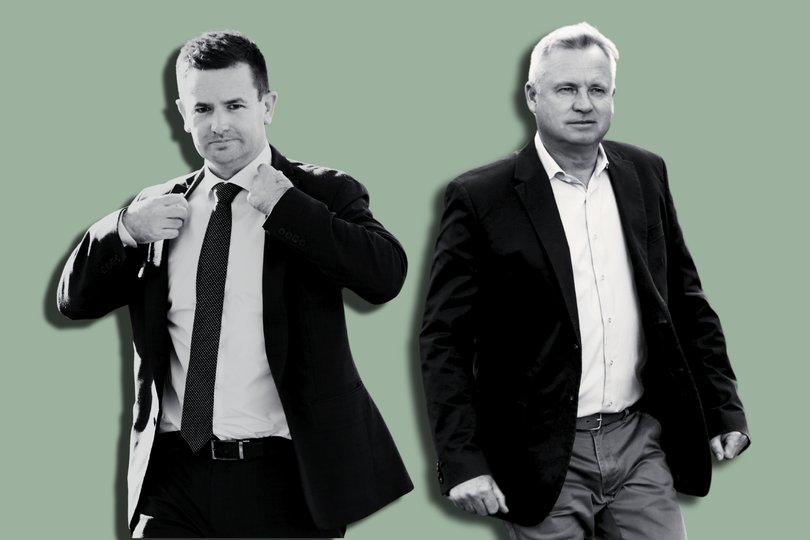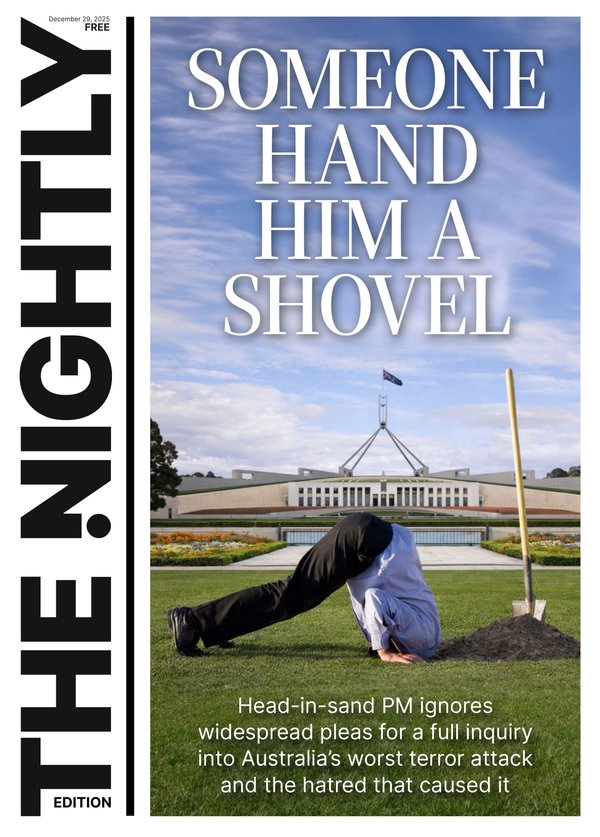Tasmanian Election 2025: Future of Macquarie Point Stadium and the Devils in the hands of upper house MPs
The new $1 billion home of the Tasmania Devils has been a major talking point of the second election in the Apple Isle in less than two years, but the future of Macquarie Point Stadium does not lie with the ballot box on Saturday.
Both major parties — neither of which are predicted to gain majority government — have stood firm in their support for the stadium, which is a non-negotiable sticking point for the Devils’ entry into the AFL in 2028.
This fact may please many football-loving Tasmanians, but swaying a group of so far intransigent independents and one Green MP in the upper house will determine if the stadium bill gets passed.
Sign up to The Nightly's newsletters.
Get the first look at the digital newspaper, curated daily stories and breaking headlines delivered to your inbox.
By continuing you agree to our Terms and Privacy Policy.To make matters more complicated, none of the upper house seats are being voted on tomorrow due to Tasmania’s unique electoral system, where only three of the 15 seats are contested annually in May.
This is unlike every other Australian state and territory, where all or some upper house seats are voted on during a lower house election, typically every four years.
The eight independent and one Green upper house MPs have all voiced their opposition to the stadium, with all but one co-signing a letter from 21 Tasmanian state and federal MPs to the AFL in June asking for the stadium deal to be renegotiated.
The Liberal and Labor parties hold six upper house seats, meaning they need the support of two more upper house MPs to pass the stadium Bill once it gets through the lower house via another minority Liberal government (most likely).
With Tasmania’s debt set to double to $13 billion by 2027–28, many non-major party politicians have argued it’s unfair that Tasmania should foot the majority of the bill for a stadium built chiefly for the sporting behemoth that is the AFL, which has an annual revenue of more than $1 billion.

The federal government has allocated $240 million for the project, while the AFL has contributed $15 million toward the stadium.
Politicians opposed to the stadium have argued the Devils could play at York Park in Launceston, where AFL games have been held for more than 20 years.
Pro-stadium advocates say that stadium is not up to scratch for a national sporting team, and the new stadium would repay benefits for the state beyond providing a home ground for the Devils — such as attracting major events and conferences.
A report commissioned by the Yes AFL Team Inc argued the annual benefit to the state would be $226m with a worst case scenario of $170m.
One of Tasmania’s best footballing products, Matthew Richardson, said despite the political mountain that still needed to be climbed to make the stadium a reality, he was confident the wider benefits would convince those politicians opposed to it to change their minds.
“The vibe on the ground is looking pretty positive. I’d suggest it looks pretty good,” the columnist for The Nightly said.
“It’s just plain to see — you go and look at recent examples of stadiums around Australia that have been built or redeveloped, like the Adelaide Oval and Optus Stadium in Perth.
“We had Trevor Nisbett (former Eagles CEO) on the radio and he spoke about how good it’s been for Western Australia—not just for the Eagles but in terms of the major events that Optus Stadium attracts.
“Then you’ve got Peter Malinauskas in South Australia singing the praises of what it’s done for Adelaide. South Australia has gone ahead leaps and bounds.”
Independent upper house MPs Kristie Johnston and Peter George reiterated their fierce opposition to the stadium this week.
“I will stand with any parliamentarian who stands up for Tasmanians and fights against this stadium,” Ms Johnston said.
“The AFL has made the stadium our problem—Tasmania’s problem,” Mr George said.
“We’re going to make this the AFL’s problem.”
Several polls show weak support for the stadium, but these have been dismissed by the major parties.
The stadium issue was one of several that led to Liberal Premier Jeremy Rockliff losing a no-confidence motion last month and calling this snap election.
He and Labor leader Dean Winter reaffirmed their support for the stadium at a leaders’ debate this week.
Both said it wouldn’t be traded away during potential talks with crossbenchers to form a minority government.
Mr Winter, whose party at the last election said it would renegotiate the deal with the AFL, expressed disappointment that the stadium had divided the state.
“We are not sacrificing the Tasmanian Devils,” Mr Winter said.
“It’s been a tragedy that this hasn’t been an issue that’s united us. (But) we’re not reneging on (the stadium deal) under any circumstances.”

Mr Rockliff, who signed the AFL deal, said Labor’s support for the stadium was welcome.
He said the stadium would transform a “wasteland” portion of Hobart into something “iconic” for Tasmania.
“We’ve got to stay the course,” he said.
The Liberals’ plan to fast-track legislation to approve the stadium has been delayed by the election.
Prime Minister Anthony Albanese has urged the state to get on with the project and consider the wider benefits of having a team.
“We support a stadium, not just because of what it will do for AFL, but for what it will do in Hobart,” he said.
Richardson said the sporting future of Tasmania was at stake.
“I just can’t see how, when you look at that, you can’t see that this is going to be good for Tasmania,” The Richmond great said.
“I think you’ve got to have it. I think Brendan Gale (Devils CEO) has been pretty clear on why they need the stadium.
“If you want to do it properly, you’ve got to have the best possible facility, and that means the commercial stuff that comes with that.
“It gives you the best chance for success to attract and retain players. It’s pretty clear that they’ve got to have the new stadium.
“I think some of the people opposed to it are the older generation that I think should be thinking ahead about the big picture for the young people in Tassie.”
